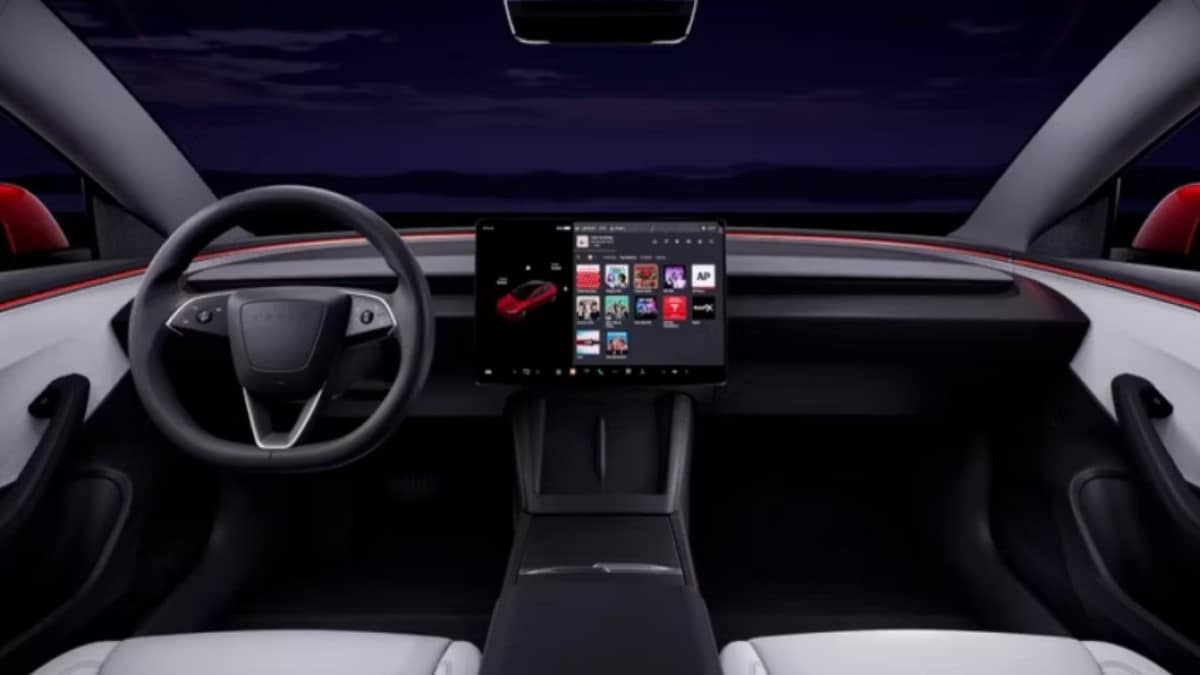If automakers want top safety scores, they’d better bring back buttons. This week, Europe’s car safety testing agency published proposed new crash-testing rules that will go into effect in 2026. They won’t give a car top scores unless certain critical functions have their own buttons.
The End of Buttons
You’ve probably noticed something if you’ve been car shopping in the last few years. Or rather, the lack of something. Buttons have been steadily disappearing, with touchscreen menus taking over everything from adjusting the mirrors to turning down the heat.
The trend largely started with Tesla, which is famous for its minimalist interiors. The company’s newest cars, such as the recently updated Model 3, don’t even have a traditional shifter – you use the touchscreen even to put the car into drive. In the Model 3’s case, there are backup buttons for the shifter in the headliner if the screen fails.
But the trend has spread to much of the auto industry. Automakers save money and production time by routing as few wires as possible through the car. Locating most climate and entertainment functions through a touchscreen also lets them update functions over-the-air, potentially improving your car in your driveway while you sleep. And – maybe – charging you more subscription fees.
A Touchscreen Can Be a Safety Issue
But paging through touchscreen menus while driving requires a driver to take their eyes off the road. That distraction is dangerous, according to safety advocates.
Related: The Safest New Cars
Europe’s New Car Assessment Program (Euro NCAP) performs a role like the U.S. National Highway Traffic Safety Administration (NHTSA). NCAP crash tests cars and issues safety ratings based on a 5-star system. Fourteen countries subscribe to its results.
The agency published new testing standards this week, which will kick in in 2026. They state that a car can’t earn the top, 5-star safety rating unless it has separate, 1-touch controls outside the touchscreen for five critical functions:
- Turn signals
- Hazard lights
- Windshield wipers
- Horn
- SOS (a different European Union law requires new cars to have their own 911-like call service for accidents)
“The overuse of touchscreens is an industry-wide problem, with almost every vehicle-maker moving key controls onto central touchscreens, obliging drivers to take their eyes off the road and raising the risk of distraction crashes,” says Matthew Avery, director of strategic development at Euro NCAP.
The agency doesn’t have the power to write rules for the auto industry. So, it can’t require automakers to use buttons. But it can ding their safety scores for the move.
“New Euro NCAP tests due in 2026 will encourage manufacturers to use separate, physical controls for basic functions in an intuitive manner, limiting eyes-off-road time and therefore promoting safer driving,” Avery says. They’ll do it by awarding no more than four stars to touchscreen-dependent cars.
The move comes after Volkswagen, Europe’s largest automaker, recently committed to bringing back the button in interior designs after negative feedback from buyers.








